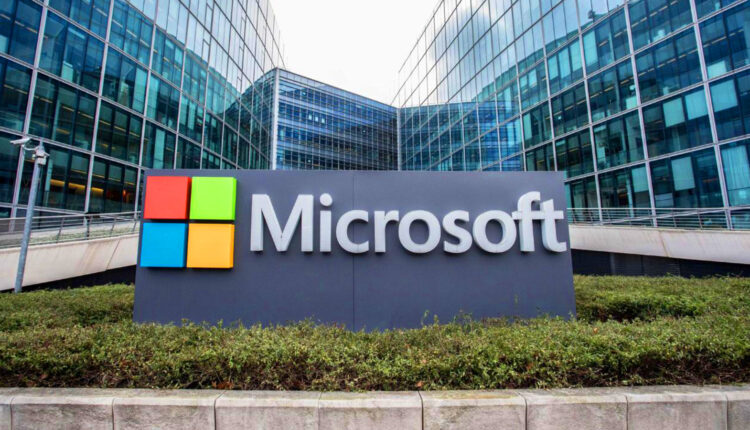©2021 Reporters Post24. All Rights Reserved.
When thinking of a post-pandemic world, thriving might not be the first word that comes to mind. Yet that is exactly what Microsoft has defined as its new benchmark for measuring employee productivity and well-being.
If there’s one thing this shift in focus reveals, it’s the importance of seeing the big picture when it comes to post-Covid work environments. To build a culture where employees can thrive, you must provide a balance between collaboration and focused, autonomous work.
But what exactly does it mean for employees to “thrive”? And how did the pandemic inspire Microsoft to see employee success differently?
By answering these questions, we’ll discover key insights that can help you and your employees go from surviving to thriving.
Why Microsoft changed from employee “engagement” to “thriving”
Dawn Klinghoffer, head of people analytics at Microsoft, and Elizabeth McCune, director of employee listening systems and culture measurement, shared Microsoft’s shift in mindset in a recent piece in the Harvard Business Review.
“One thing is clear: None of us are the same people today as we were prior to 2020,” write the authors. “So, as our employees change, the ways we can best empower them need to evolve too.”
That change was inspired by Ross School of Business’s Gretchen Spreitzer and colleagues’ research on thriving, which Klinghoffer and McCune describe as being “energized and empowered to do meaningful work.”
Microsoft landed on this new definition after noticing a gap between the results of its extensive annual employee engagement survey and a somewhat more sober reality. Even though employees gave their experience high ratings across dimensions, a deeper dive into the data revealed a number of struggles. To get a more accurate idea of the status quo, and design measures to improve it, Microsoft made the shift to employee thriving as a higher and more actionable benchmark.
While much of Microsoft’s new research isn’t new (extolling the benefits of good managers and inclusive culture), one result stands out, even more so for increasingly remote-heavy work routines:
Thriving and work-life balance are connected, but not identical.
“While thriving is focused on being energized and empowered to do meaningful work in your role, work-life balance reflects employees’ personal lives, too,” explain Klinghoffer and McCune. “And there are times when thriving and work-life balance can move in different directions.”
For example, the authors illustrate how a newer employee who feels underutilized may have a great work-life balance from a perspective of hours and workload, but not feel energized or inspired by their work. On the other hand, some persons are willing to make a short-term tradeoff on work-life balance if they find their work fulfilling.
But what about the workers who experienced the best of both worlds, namely they rated high work-life balance and said they were thriving in the work-focused portion of their life? Further research indicated that these employees, on average, demonstrated the following:
- Five fewer hours in the workweek
- Five fewer collaboration hours
- Three more focus hours
- 17 fewer employees in internal network size
For Microsoft, this confirms earlier findings while opening interesting new avenues of thinking about work environments. “Collaboration is not inherently bad — for many employees, those times of close teamwork and striving toward a common goal can fuel thriving,” state the authors. “However, it is important to be mindful of how intense collaboration can impact work-life balance, and leaders and employees alike should guard against that intensity becoming 24/7.”
So, how can you use Microsoft’s insights to help your employees thrive?
Keep collaboration in balance
It’s important to remember that collaboration must be balanced with autonomous work to successfully fuel thriving.
With this in mind, consider breaking up large departments or even teams into smaller teams, to lower the stresses associated with collaboration while taking full advantage of its benefits. Encourage teams to reduce the number of meetings overall, possibly even declare a general “meeting ban” on one or two days a week (or mornings or afternoons).
Prioritize deep work
Don’t underestimate the benefits of encouraging time for focus work.
Employees should feel empowered to indicate periods of uninterrupted deep work on their calendars or in instant messaging apps. To that end, team leads must build respect for such boundaries into the norms and culture they promote.
Measure outcomes, not hours
Finally, consider introducing a shorter workweek. As an employer, your visceral reaction to that may be “No way!” But remember, a key factor in employee thriving at Microsoft was five fewer hours in the workweek.
Shortening the workweek by a few hours doesn’t have to mean a drop in productivity. For example, a shift in emphasis to results, over hours worked, can inspire employees to finish their work in less time, which can contribute to their ability to thrive. That’s a win-win for both the employee and the organization.
The search for balance in managing employee productivity and well-being is ongoing and, like any balance, can never be static. As Klinghoffer and McCune conclude: “Ultimately, every score, whether high or low, gives us a baseline to keep listening, learning, improving, and adapting to new changes that still undoubtedly lie ahead.”


